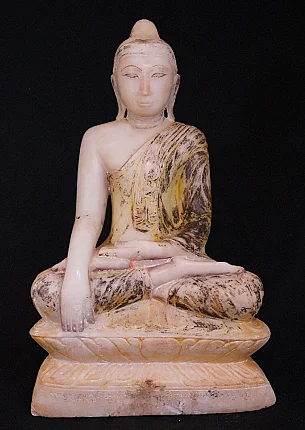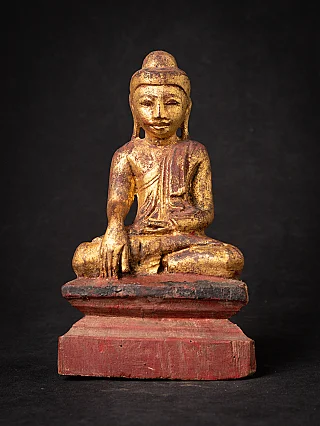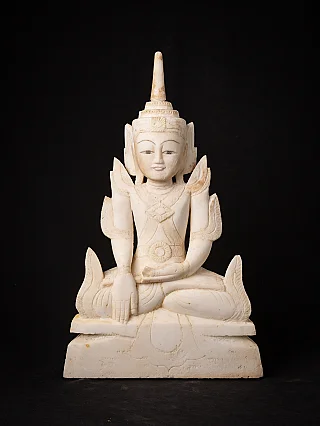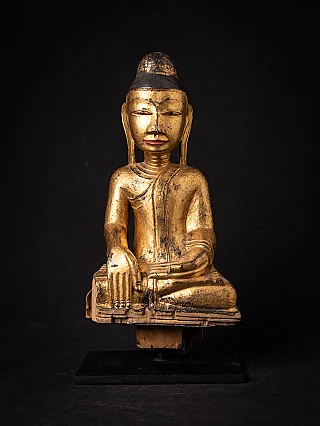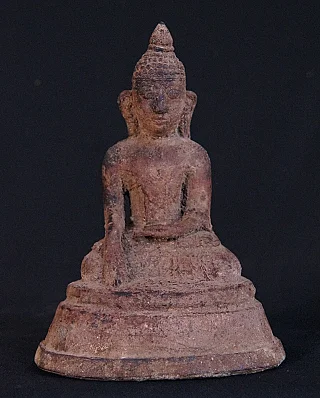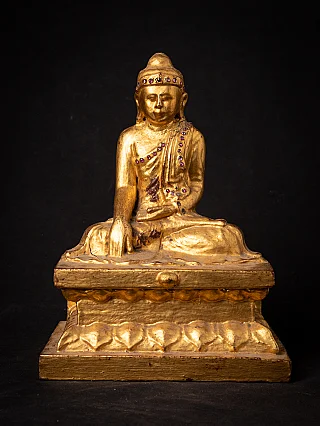The Buddha's philosophy of non-attachment and the middle way
Author : Peter Vredeveld

a. The Buddha's teachings on non-attachment and the middle way
The Buddha, also known as Siddhartha Gautama, was a spiritual teacher born in Nepal and founded Buddhism. One of the critical concepts in Buddhist philosophy is non-attachment, which involves letting go of our attachment to material possessions, relationships, and even our thoughts and emotions. Another essential concept is the middle way: finding balance and avoiding extremes.
b. The importance of these concepts in Buddhist philosophy
Non-attachment and the middle way are central to Buddhist philosophy and are considered essential for achieving enlightenment, which is the ultimate goal of Buddhism. Individuals can cultivate inner peace, wisdom, and compassion by practicing non-attachment and following the middle way.
Fall in love with Buddhism. Take a tour of our gallery!
Non-attachment: Letting Go of Attachment

a. Definition and explanation of non-attachment
Non-attachment is letting go of our attachment to impermanent and ultimately unsatisfying things, including material possessions, relationships, thoughts, and emotions. Non-attachment does not mean that we should avoid these things altogether, but rather that we should not become attached to them in a way that causes suffering when they inevitably change or disappear.
b. Practicing non-attachment in daily life
Practicing non-attachment in daily life involves recognizing and consciously letting go of our attachments and can be done through mindfulness practices such as meditation and self-reflection. Some examples of how to practice non-attachment in daily life include:
- Material possessions: Letting go of the belief that material possessions bring happiness and instead focusing on gratitude for what we have in the present moment.
- Relationships: Recognizing that all relationships are impermanent and allowing them to evolve naturally without clinging to or trying to control them.
- Thoughts and emotions: Observing our thoughts and feelings without becoming attached to or identifying with them allows us to cultivate inner peace and emotional stability.
c. Benefits of practicing non-attachment
- Freedom from suffering: Non-attachment lets us let go of our attachments and desires, often the root causes of suffering.
- Cultivating inner peace and contentment: By letting go of our attachment to external things, we can cultivate a sense of inner peace and joy that is not dependent on external circumstances.
Practice Meditation with Buddha statues
The Middle Way: Finding Balance
-large.jpg)
a. Definition and explanation of the middle way
The middle way is finding balance and avoiding extremes, which involves avoiding excessive indulgence and extreme asceticism and instead finding a balance between pleasure and pain and between attachment and non-attachment.
b. Practicing the middle way in daily life
Practicing the middle way in daily life involves recognizing our tendencies towards extremes and consciously seeking balance. Some examples of how to practice the middle way in daily life include:
- Avoiding extremes: Avoiding both excessive indulgence and extreme asceticism and instead finding a balance between the two.
- Balancing pleasure and pain: Recognizing that pleasure and pain are natural aspects of life and finding a balance between them.
- Cultivating moderation: Finding a middle ground between excess and deficiency in all aspects of life.
c. Benefits of following the middle way
- Finding balance and harmony in life: Following the middle way allows us to find balance and harmony in all aspects of life.
- Developing a clear and focused mind: By avoiding extremes and cultivating moderation, we can develop a clear and focused mind that is not clouded by attachment or aversion.
View all of our Bhumisparsha Mudra statues
The Relationship Between Non-attachment and the Middle Way

a. How non-attachment and the middle way complement each other
Non-attachment and the middle way are complementary concepts in Buddhist philosophy. Non-attachment helps to cultivate the mental discipline necessary to follow the middle way. By letting go of attachment, individuals can better avoid the extremes of indulgence and denial, which can lead to suffering. Similarly, the middle way helps individuals to develop the mental clarity necessary to cultivate non-attachment. By finding balance and harmony in life, individuals can better see the impermanence of all things, including their thoughts and emotions.
b. Practicing non-attachment and following the middle way for a balanced life
Practicing non-attachment and the middle way is necessary to achieve a balanced life. Non-attachment allows individuals to let go of their attachments to material possessions, relationships, thoughts, and emotions, freeing them from suffering and cultivating inner peace and contentment. The middle way helps individuals avoid indulgence and denial, find balance and harmony in life, and develop a clear and focused mind.
c. Examples of how non-attachment and the middle way work together
A non-attachment person may let go of their attachment to material possessions, recognizing that they are impermanent and ultimately meaningless. At the same time, they may follow the middle way by finding a balance between indulgence and denial, avoiding both the extremes of hoarding and excessive consumption. In doing so, they cultivate the mental discipline necessary to maintain non-attachment.
Similarly, a person practicing the middle way may find balance and harmony in their relationships, avoiding the extremes of attachment and aversion. By finding a balance between love and detachment, they cultivate the mental clarity necessary to develop non-attachment and recognize the impermanence of all things.
Criticisms of Non-attachment and the Middle Way

a. Criticisms of these concepts in Buddhist philosophy
Despite the benefits of non-attachment and the middle way, these concepts have been criticized in Buddhist philosophy.
- Challenges to the idea of letting go
One criticism of non-attachment is that it can be challenging to let go of attachments to people, places, and things, particularly in the face of suffering. Critics argue that non-attachment can lead to a lack of compassion and empathy as individuals become detached from their world.
- Arguments against the middle way as a path to enlightenment
Similarly, some critics argue that the middle way needs to be more complex and offer a clear path to enlightenment. They say the path to enlightenment requires a more rigorous and disciplined approach rather than simply finding a balance between extremes.
b. Alternative viewpoints and perspectives
- Other philosophical traditions' takes on non-attachment and the middle way
Other philosophical traditions, such as Stoicism and Taoism, promote non-attachment and finding balance in life. However, these traditions have unique perspectives on these concepts and how they relate to human existence.
- Contemporary debates and discussions
In contemporary debates and discussions, there is ongoing discussion about the relevance of non-attachment and the middle way in modern society. Some argue that these concepts must be updated and adequately address the complexities of contemporary life. In contrast, others say they are more relevant than ever in an age of materialism and consumerism.
Conclusion
The Buddha's philosophy of non-attachment and the middle way are key tenets of Buddhist teachings. Non-attachment emphasizes the importance of letting go of attachment to material possessions, relationships, thoughts, and emotions to cultivate inner peace and contentment. In contrast, the middle way emphasizes balance and harmony by avoiding extremes and cultivating moderation.
In today's world, where many people are consumed by material possessions, relationships, and the constant pursuit of pleasure, these concepts of non-attachment and the middle way can offer valuable insights and practices for achieving a more fulfilling and balanced life.
By practicing non-attachment and following the middle way, we can free ourselves from the suffering caused by attachment and find greater peace and contentment in our daily lives. We can also cultivate a more precise and focused mind, making wiser decisions and developing greater empathy and compassion towards others.
In conclusion, the Buddha's teachings on non-attachment and the middle way offer valuable insights for achieving a more fulfilling and balanced life. We can apply these concepts daily by letting go of attachment, finding balance and harmony, and cultivating inner peace and contentment.
Share this page



















